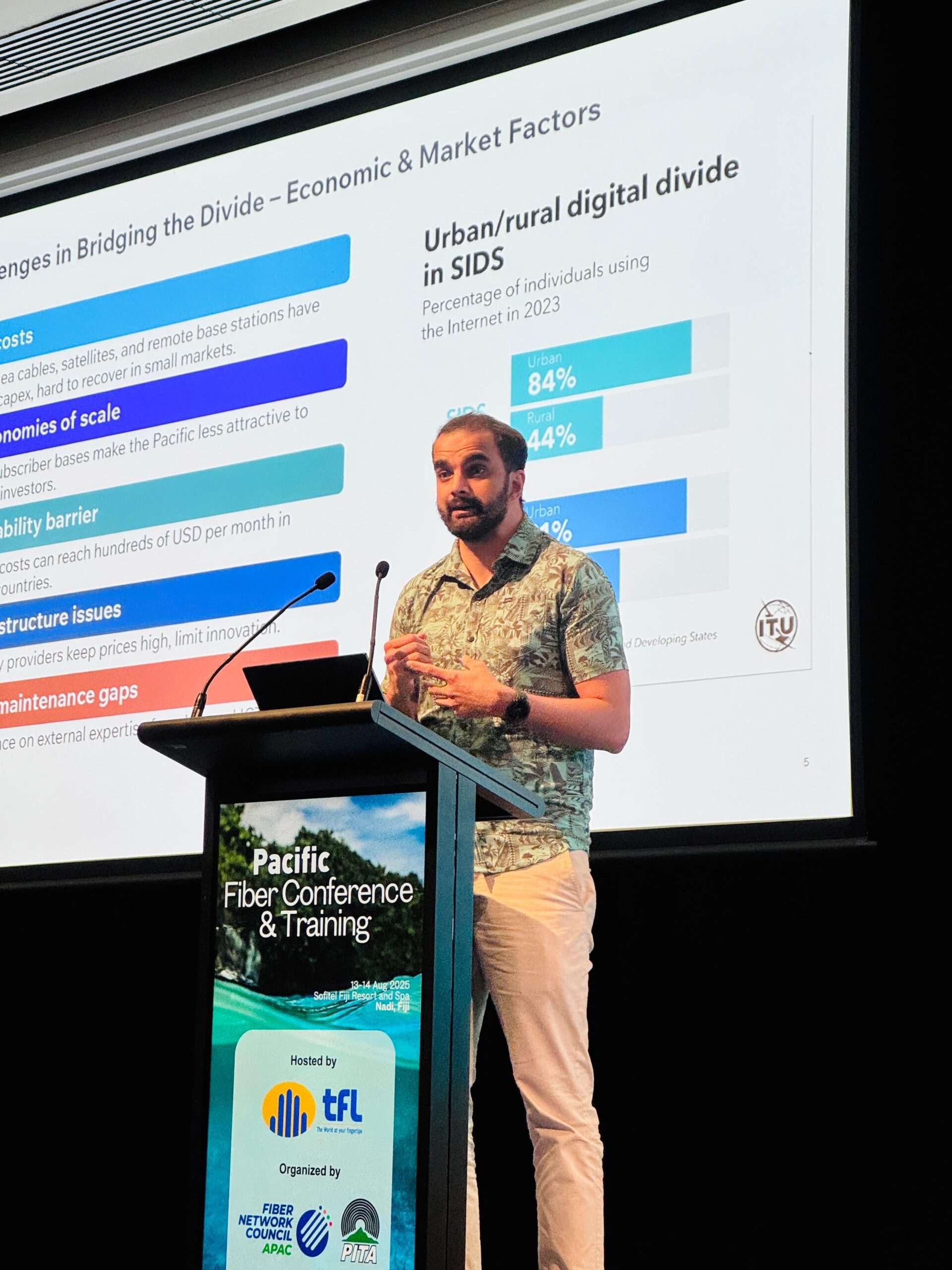Contact us
Need a problem solved?
Our dedicated experts, located around the world, are here to help.
Connectivity in the Pacific is at a crossroads. The region has made progress in expanding broadband infrastructure, yet the digital divide remains stark. A multi-access strategy is essential, combining fibre, satellite, microwave, cellular, and Wi-Fi solutions to deliver resilient and inclusive connectivity.
Pacific nations face some of the most complex connectivity challenges in the world, shaped by vast ocean distances, small populations, and frequent natural disasters. No single technology can meet these demands on its own. Submarine fibre cables deliver high-capacity international bandwidth, but they cannot reach every community. Satellites extend coverage to the most remote islands and ensure resilience when natural hazards strike. Meanwhile, terrestrial solutions like microwave backhaul, fixed wireless, and cellular networks bring national reach, and Wi-Fi distributes access within households, schools, and businesses. Each technology has a defined role, but their impact is greatest when they are deployed together.
A multi-access strategy recognises that connectivity must be layered, resilient, and adaptable. By combining fibre, satellite, microwave, cellular, fixed wireless, and Wi-Fi, governments and operators can ensure that if one option is limited, another can fill the gap. This integrated approach reduces vulnerability to single points of failure, improves affordability by spreading costs, and maximises coverage even across small outer islands. In practice, this means planning infrastructure holistically, ensuring that every new cable, tower, or satellite service is deployed as part of a broader ecosystem rather than as a standalone project. Only by weaving these technologies together can Pacific countries build networks that are both reliable and inclusive.
Satellite connectivity remains indispensable for the Pacific. The 2022 Tonga volcanic eruption highlighted its importance when the sole submarine cable was cut, and satellites provided the only communications link. Within days, emergency satellite terminals reconnected essential services, underlining the role of space-based systems as a rapid and resilient backup during crises.
Recent advances in satellite technology have strengthened this role. High-throughput geostationary satellites and emerging Lower Earth Orbit (LEO) systems now offer greater capacity and lower latency, improving service quality for island nations. For many communities where submarine cables or terrestrial networks are not viable, satellites are the only practical option for connectivity.
For Pacific governments, satellites are not just an interim solution, but a core element of national broadband strategies. Their ability to cover vast areas, connect remote islands, and provide redundancy makes them a cornerstone of any multi-access approach to bridging the digital divide in the region.
Our research highlights the tangible economic benefits of new infrastructure:
These findings demonstrate how investment in digital infrastructure directly translates into stronger economic performance, job creation, and long-term social development across Pacific Island economies.
These numbers show that connectivity is more than infrastructure. It is the foundation for digital economies, better governance, and improved social outcomes in the Pacific. The right policies, combined with investment in multi-access solutions, will determine how quickly the region closes its digital divide.
These insights were shared during the keynote delivered by Hamza Hameed at the Pacific Fiber Conference 2025 in Nadi, Fiji.
To receive a copy of Hamza’s slides from his keynote address, please contact [email protected].


Our dedicated experts, located around the world, are here to help.


